There’s something quietly magical about biting into a radish in springtime. It’s a sensory moment—cool and crisp, peppery and clean, with just enough bite to remind you that winter is finally behind us. Too often overlooked or relegated to the side of a salad plate, the humble radish is having a moment—and this is the season to bring it center stage. From pickled snacks to roasted sides, radishes are more versatile (and more nutritious) than they get credit for.
Whether you’re grabbing a bunch at the farmers’ market or pulling them straight from your garden soil, here’s everything you need to know about enjoying radishes this spring—including why they’re good for you, how to store them, the many types available, and fresh, creative ways to prepare them.
Why Radishes Deserve a Spot on Your Plate

Radishes may be small, but they pack a serious nutritional punch. Low in calories but high in fiber and water content, they’re a refreshing way to support digestion and hydration as the weather warms up. A cup of sliced radishes contains only about 19 calories but delivers nearly 2 grams of fiber and about 100 mg of potassium.
Radish Nutrition
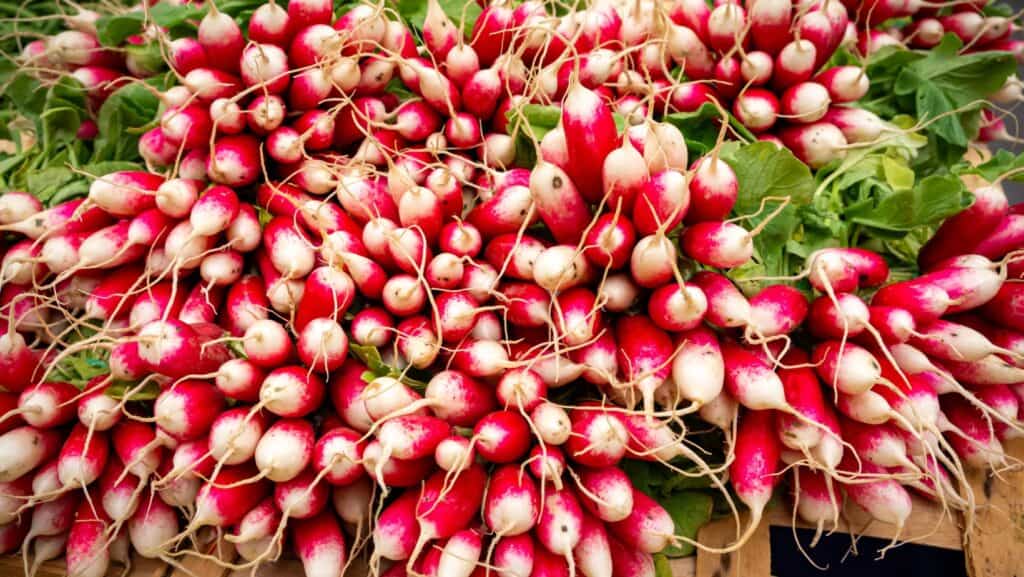
But radishes go beyond crunch. They contain natural compounds like glucosinolates and isothiocyanates—sulfur-rich phytochemicals also found in cruciferous vegetables like broccoli and cabbage. These have been studied for their potential to support liver function and possibly reduce inflammation. Radishes also offer a bit of vitamin C and folate, both important for immune function and cell health.
Crunchy & Hydrating
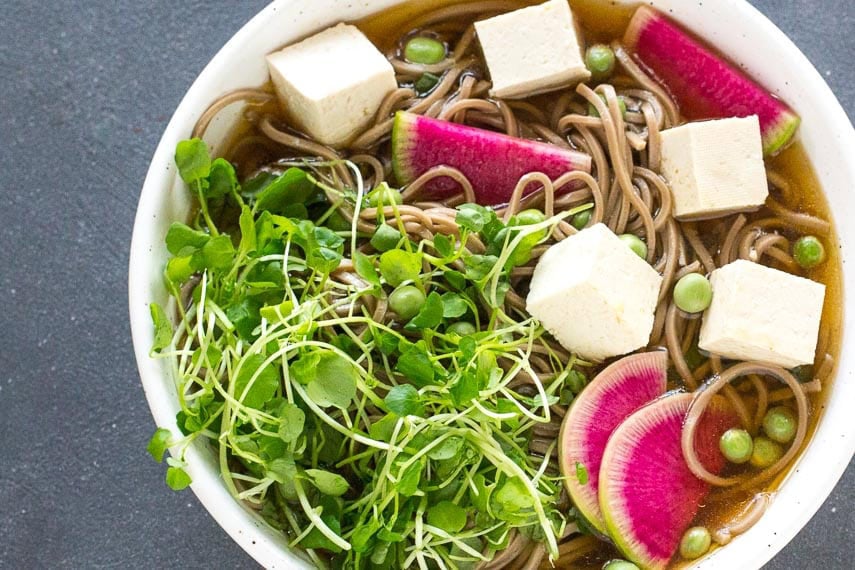
Another bonus? They’re hydrating. Spring radishes can contain over 90% water, making them a cooling, juicy snack or salad ingredient—especially if you’re not great at remembering to drink water throughout the day. The image above is a cold soup, perfect for hot days.
Not All Radishes Are Created Equal
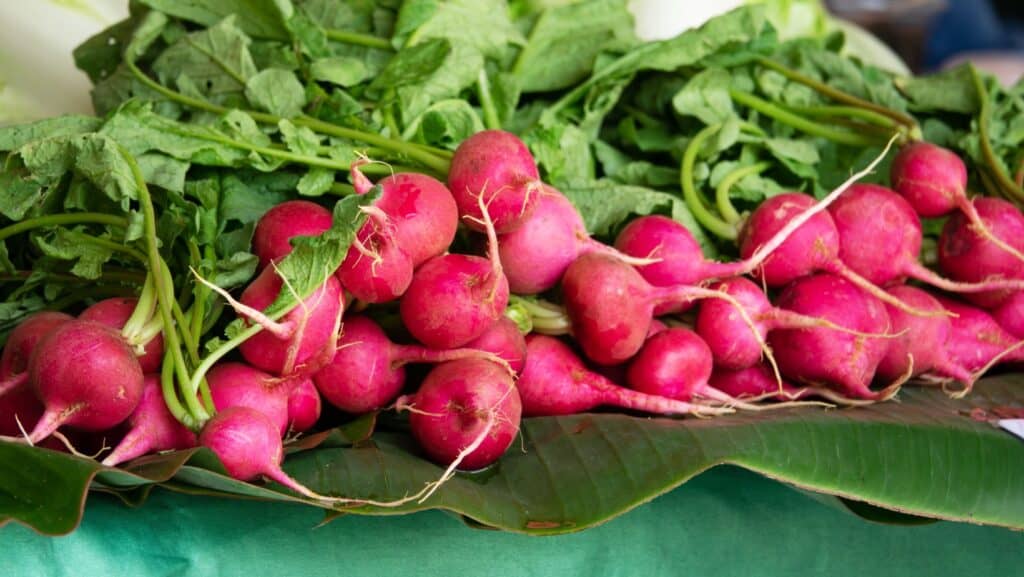
When most people think of radishes, they picture the classic round, red-skinned variety with a white interior—often called the Cherry Belle. But there are many different kinds of radishes, each with its own unique flavor profile, texture, and best use. Here are just a few worth exploring:
French Breakfast Radish

These oblong, pink-and-white radishes are slightly milder and sweeter than round varieties, making them ideal for eating raw with a swipe of butter and a pinch of salt—a French tradition.
Watermelon Radish
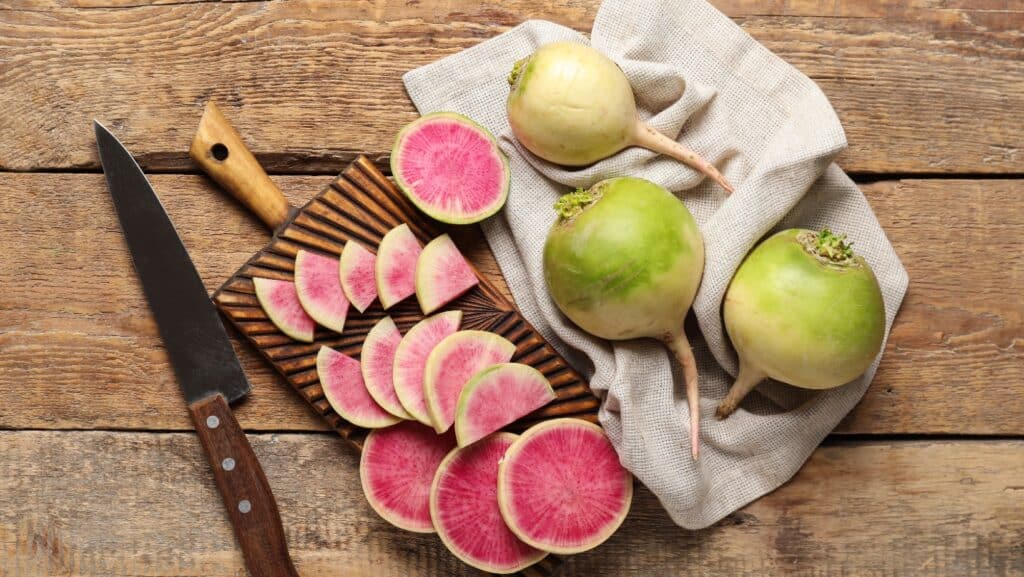
A stunning variety with a pale green exterior and a bright fuchsia interior. These are milder in flavor and make a beautiful addition to salads or crudité platters.
Daikon Radish
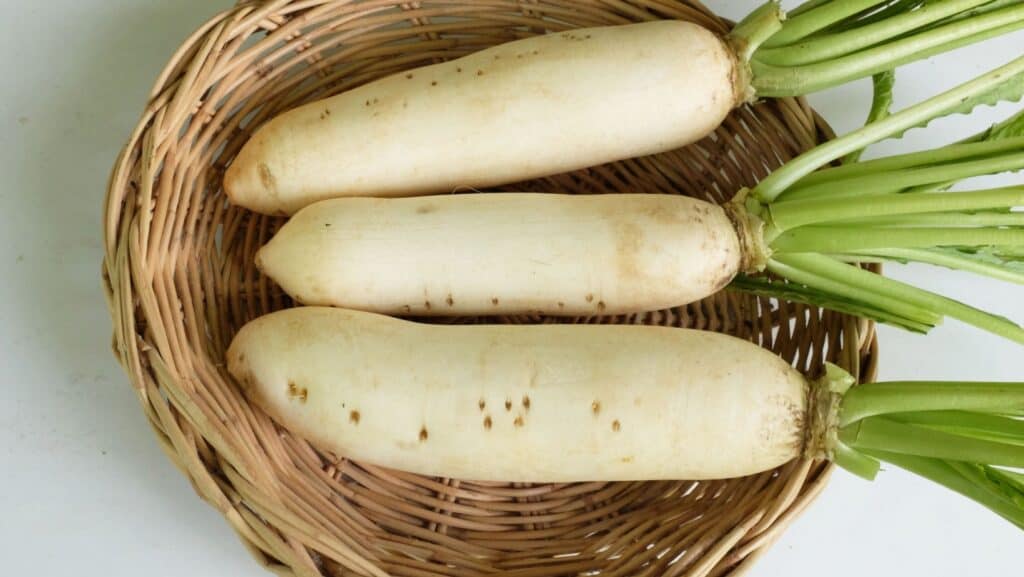
Popular in Asian cuisine, this long, white radish has a mild, slightly sweet flavor. It’s often pickled, grated into slaws, or added to soups and stews.
Black Radish
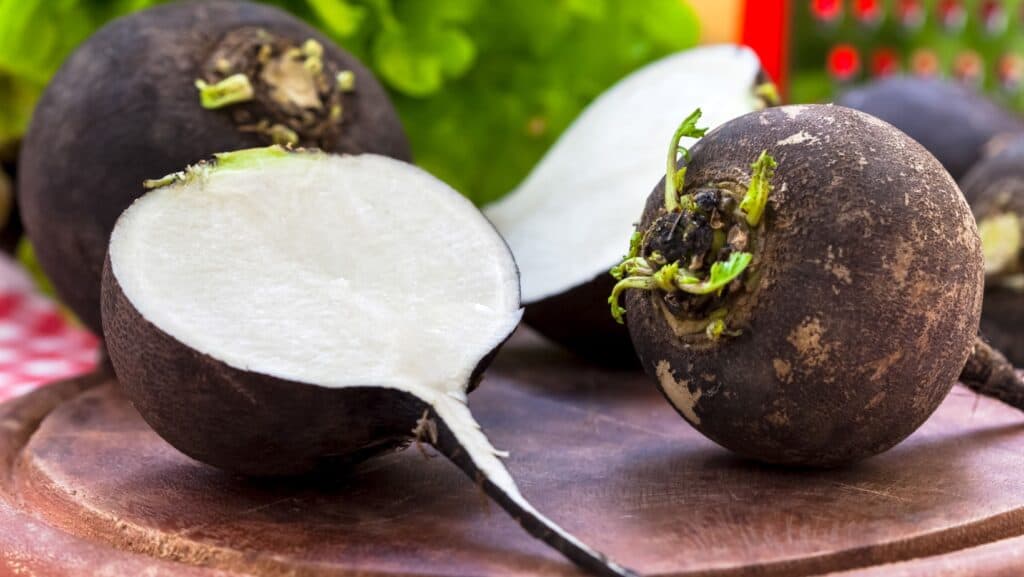
A winter-hardy variety with a rough, dark exterior and a sharp, spicy bite. It’s more intense than spring radishes, but mellow when cooked.
Easter Egg Radishes
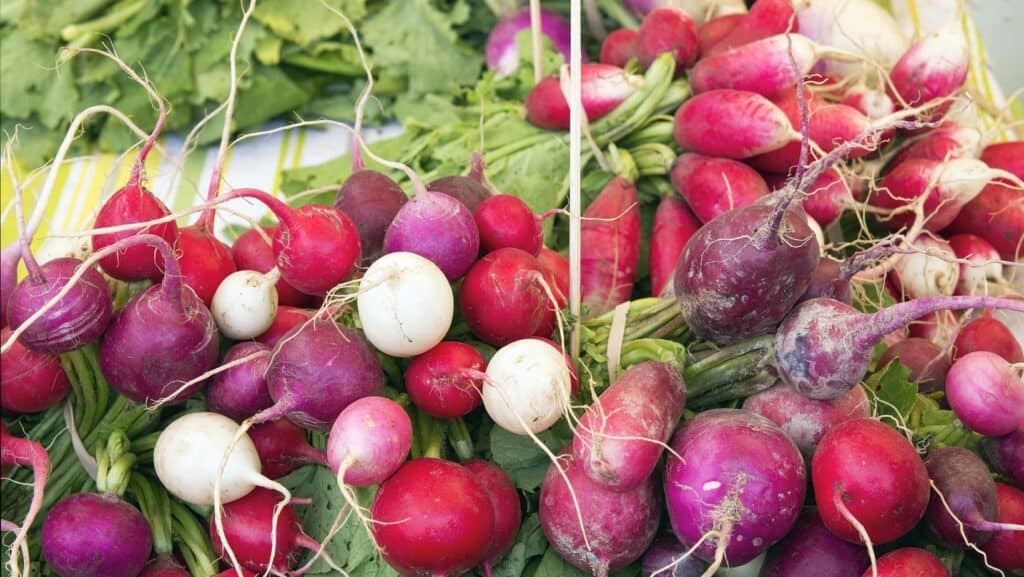
These colorful bunches include red, pink, purple, and white varieties. They’re great for kids or for adding color to salads and sandwiches.
If you’ve only tried one type of radish, spring is the perfect time to branch out—literally and figuratively.
How to Store Radishes to Keep Them Crisp
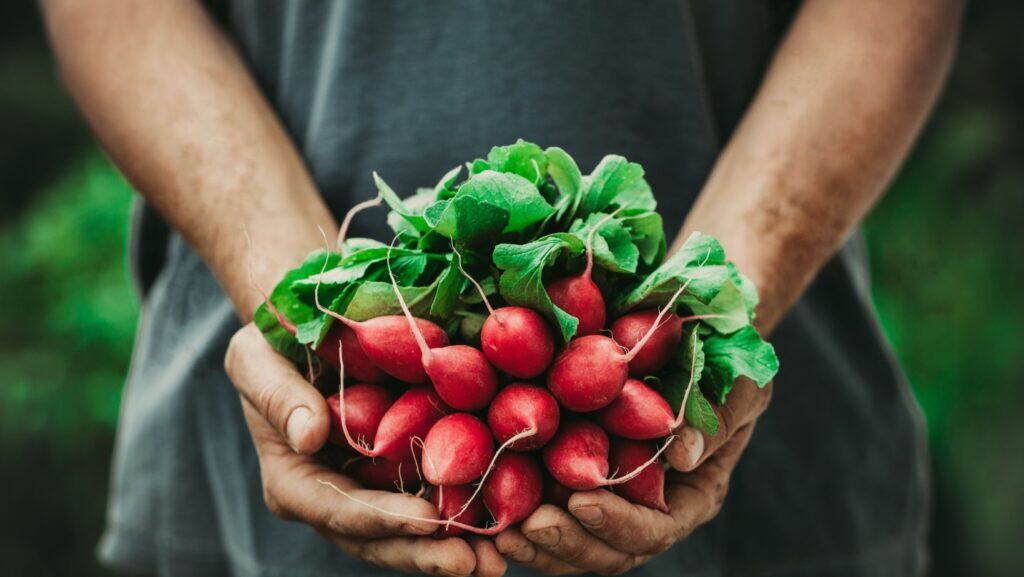
To keep radishes fresh and crunchy, treat them a bit like fresh herbs: remove the greens and store them separately. Leaving the tops on causes the radishes to lose moisture more quickly.
- For the roots: Rinse gently, then pat dry. Store in a container or plastic bag with a slightly damp paper towel, and refrigerate. They’ll keep for up to a week or more.
- For the greens: Don’t toss them! Radish greens are edible and mildly peppery, like arugula. Rinse well and store them like salad greens, or sauté them like spinach.
If your radishes start to go soft, try soaking them in ice water for 20–30 minutes—they’ll perk right up.
Simple and Surprising Ways to Enjoy Radishes
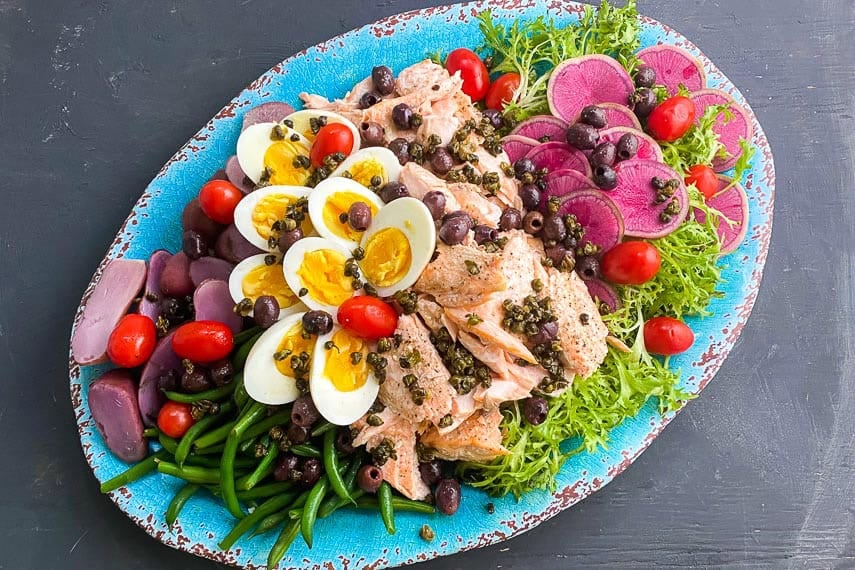
Radishes aren’t just for garnishes. Here are some fresh, unexpected ways to work them into your meals this season, like the Salade Nicoise above.
Buttered Radishes with Sea Salt
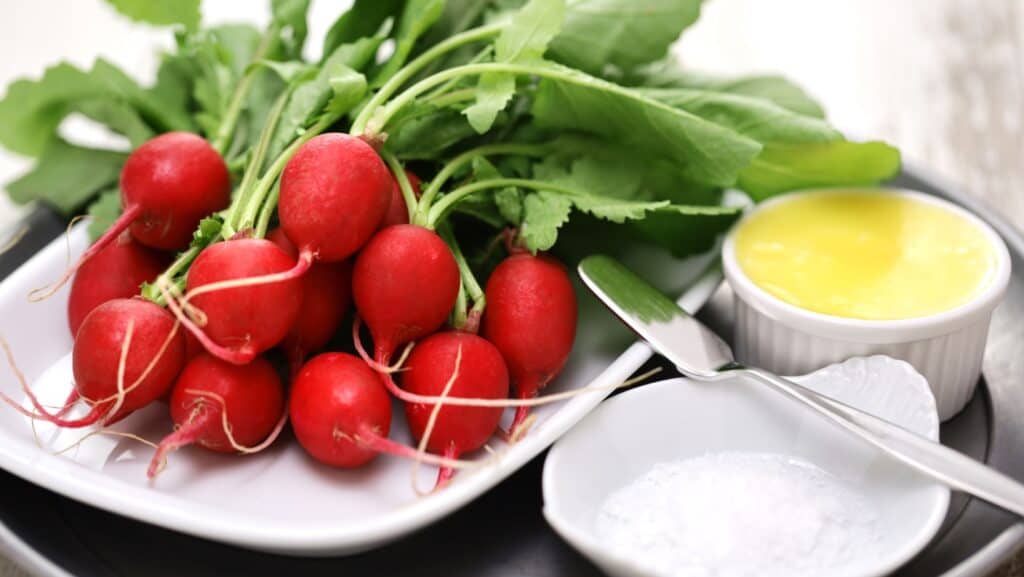
This timeless French snack is as simple as it gets—but also strangely luxurious. Slice radishes thin and serve them with softened cultured butter and flaky sea salt. Try it on crusty baguette slices or on its own as an appetizer.
Pickled Radishes
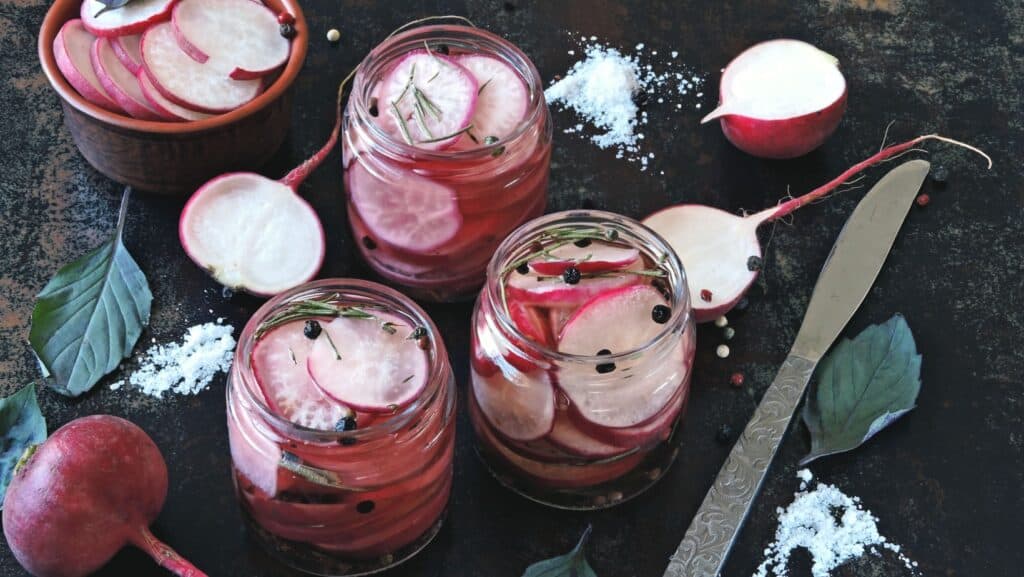
Quick-pickled radishes take just minutes to prepare and add a zesty crunch to tacos, sandwiches, grain bowls, or avocado toast. Slice them thin and soak them in a mix of vinegar, sugar, and salt. In an hour, they’re bright pink and flavor-packed.
Roasted Radishes
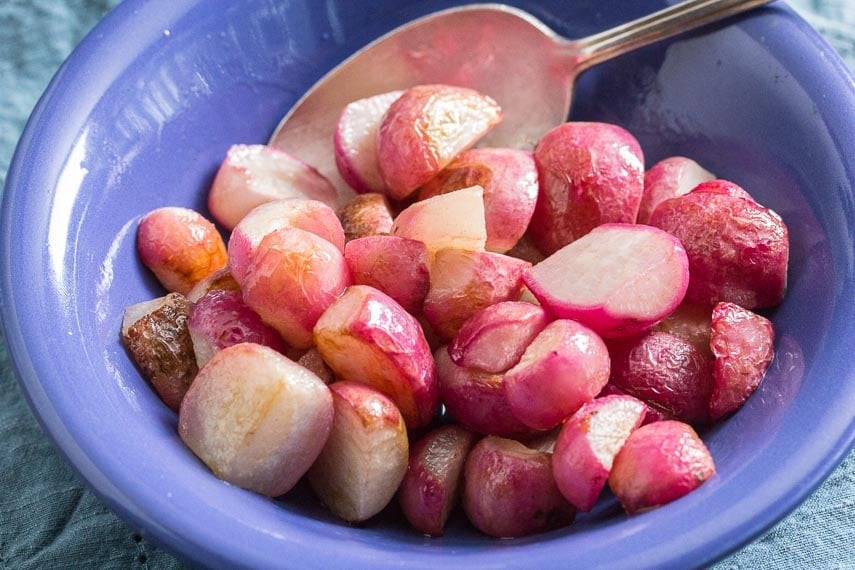
Surprise! Cooking radishes softens their bite and brings out their sweetness. Toss them with olive oil and roast at 400°F for 20 minutes until tender. Try them with a little thyme or rosemary. You can also sauté them. Check out this recipe.
Radish Top Pesto
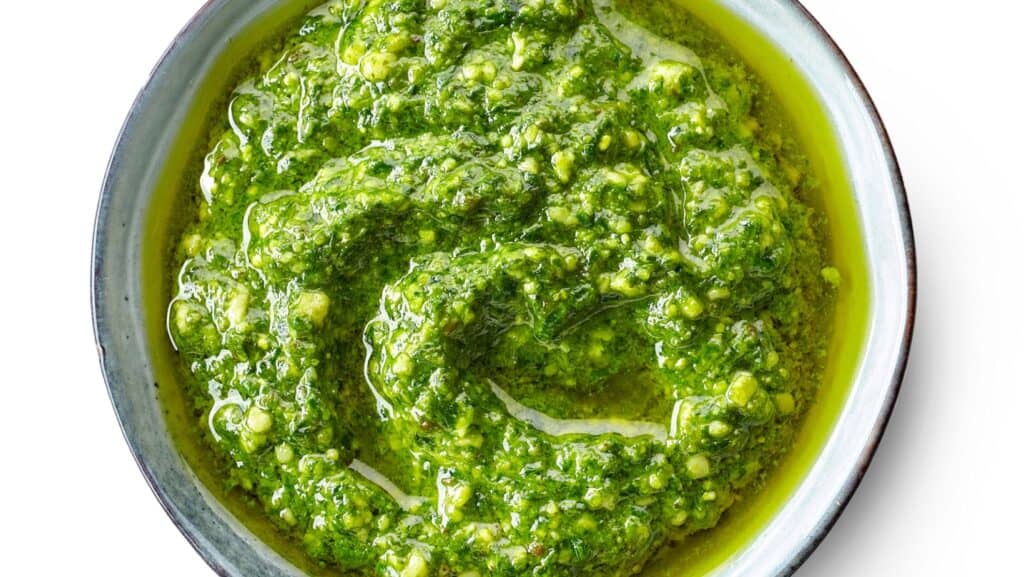
Don’t let the greens go to waste. Blend them into a peppery pesto with garlic, nuts (like walnuts or almonds), olive oil, and Parmesan. Great on pasta, toast, or mixed into warm roasted veggies.
Sliced into Spring Salads

Pair radishes with butter lettuce, snap peas, mint, and a lemony vinaigrette. Or thinly slice watermelon radish over arugula and top with shaved Parmesan for a restaurant-worthy side.
Grated into Slaw

Add crunch and a hint of heat to slaws by grating or julienning radishes along with cabbage and carrots. Finish with a tangy vinaigrette or a creamy yogurt dressing.
In Rice Paper Rolls
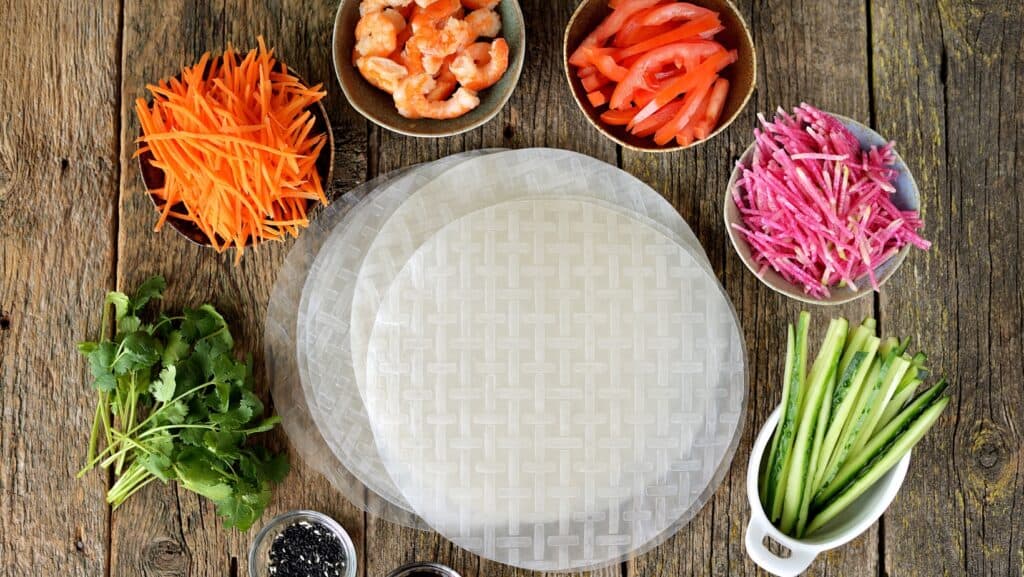
Thin slices of radish add crunch and color to spring rolls filled with rice noodles, shrimp or tofu, and fresh herbs like mint and cilantro.
On Toast with Ricotta or Goat Cheese
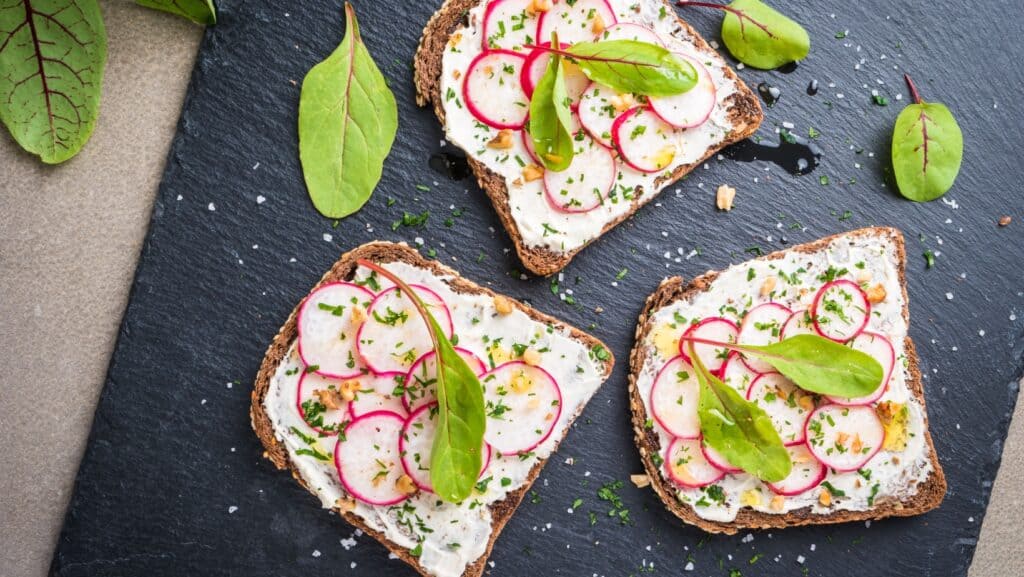
Layer sliced radishes over whipped ricotta or tangy goat cheese on toast. Add a drizzle of honey or hot honey for a sweet-and-spicy balance.
Tucked into Tacos

Their peppery bite is the perfect counterpoint to rich, fatty meats or spicy black beans. Watermelon radish especially adds visual drama.
As a Crudité Star

Instead of relegating radishes to the side of a veggie platter, make them the highlight. Serve halved or whole, alongside a dip like green goddess, tzatziki, or whipped feta.
The Final Word on Radishes

Radishes are one of spring’s most underrated treasures. They’re fast-growing, easy to find, and endlessly versatile—whether you’re slicing them raw, roasting them, or pickling a batch for your next charcuterie board. They’re also a refreshing way to support your health, thanks to their fiber, water, and unique plant compounds.
So, this spring, give radishes a little more love. They might just steal the spotlight at your next meal.
These 12 Spring Fruits And Vegetables Are Going To Give You The Greatest Boost For Your Buck
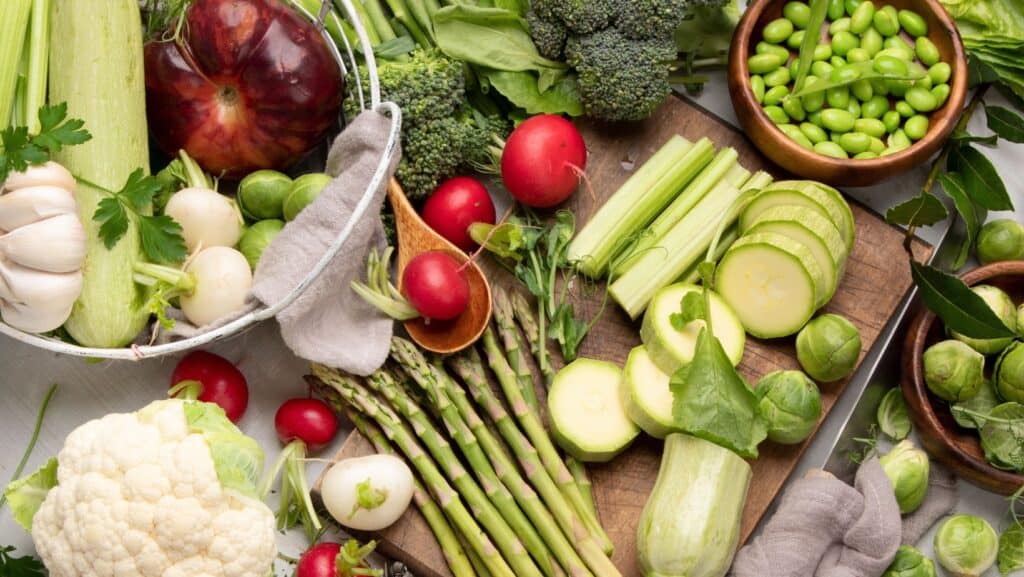
There’s something special about spring produce. After a long winter of heavy meals and limited fresh options, the farmers’ markets and grocery store shelves start bursting with color again. It’s not just beautiful—it’s nutrient-rich. Spring fruits and vegetables are full of vitamins, minerals, antioxidants, and fiber that can help reset your body and get you feeling vibrant again.
If you’re trying to eat with the seasons (and maybe boost your nutrition while you’re at it), here are 12 of the most nutritionally dense spring picks—and why they’re worth adding to your basket.
READ: These 12 Spring Fruits And Vegetables Are Going To Give You The Greatest Boost For Your Buck





